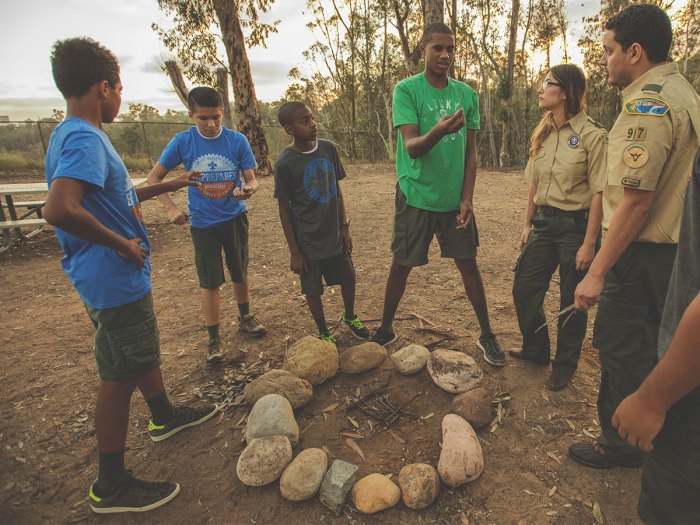How to Prevent Fire Damage When Building a Campfire

Campfire building is an important camping skill, but do not be careless with a campfires. Overuse of campfires and an increasing demand for firewood has degraded the natural appearance of many areas.
Campfires should be built only in certain places, constantly supervised and doused completely. The best place to make one is in established sites that land managers have constructed, like within a metal ring, grill or stone fireplace.
If your campsite does not have a place already built, you should use a fire mound or fire pan to protect the ground. Heat from a campfire can char the ground, blacken rocks and sterilize soil. Vegetation might have a hard time growing where a campfire has been.
To help minimize your fire’s impact, collect mineral soil, like silt, clay or sand. Lay down a tarp or ground cloth and form a soil mound on top of it at least 6 inches thick and 18 inches in diameter. The soil will insulate the ground from the fire’s heat, and the tarp can help with cleanup.
Alternatively, you can use a fire pan, which is a metal pan with sides that are at least 3 inches tall. These can be barbecue grills or aluminum roasting pans. Place your pan atop several inches of mineral soil to protect the ground.
Review fire-building instructions in official BSA publications before making your fire.
The tip about laying down dirt on a ground tarp to protect the surrounding area is interesting and intriguing. You could also add information about fires you can build in a hole you have dug out (these fires work for windy weather). You could also change the location where the fire ring is, so that the ground isn’t as negatively affected. You may want to add more information about smothering and dousing a campfire, because that is the most effective way to prevent fire damage. You might consider talking about how you should only have a fire ring in an area where vegetation isn’t hanging over it or is close enough to be caught on fire.
can you add more information. But it was also helpful information.
why the water, not dirt tip, at least with accidental fires I’ve heard (by word of mouth, not all that reliable) that dirt or sand will work better because oil floats on water (thus the many stories of burning rivers)